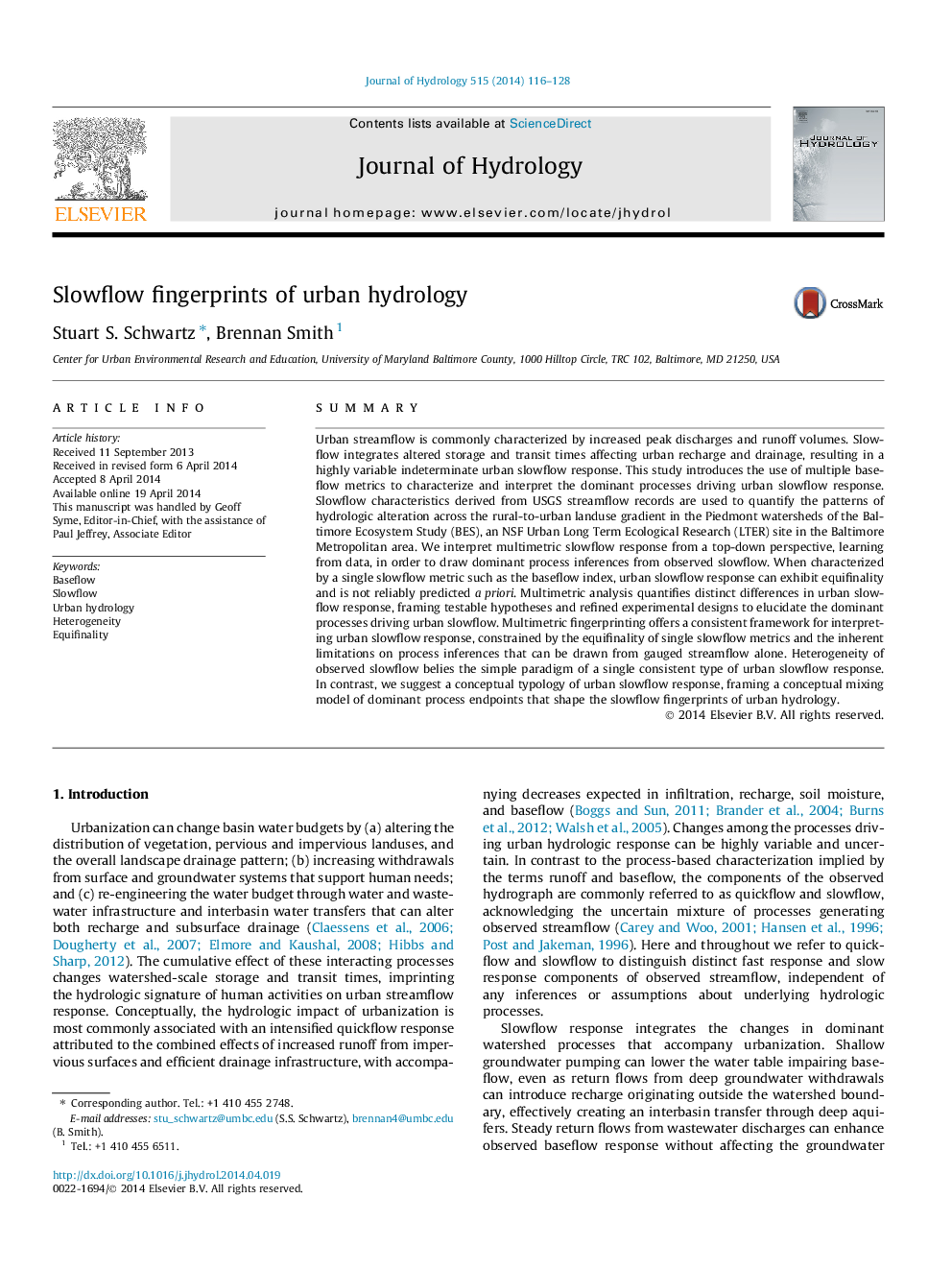| کد مقاله | کد نشریه | سال انتشار | مقاله انگلیسی | نسخه تمام متن |
|---|---|---|---|---|
| 6412831 | 1629933 | 2014 | 13 صفحه PDF | دانلود رایگان |
- Slowflow integrates changes in storage and transit times accompanying urbanization.
- Equifinality and heterogeneity of slowflow motivates multimetric slowflow analysis.
- We demonstrate multimetric slowflow analysis for watersheds of the BES LTER.
- We propose an urban slowflow typology framed by dominant process endpoints.
- Multimetric analysis can distinguish dominant process endpoints in urban slowflow.
SummaryUrban streamflow is commonly characterized by increased peak discharges and runoff volumes. Slowflow integrates altered storage and transit times affecting urban recharge and drainage, resulting in a highly variable indeterminate urban slowflow response. This study introduces the use of multiple baseflow metrics to characterize and interpret the dominant processes driving urban slowflow response. Slowflow characteristics derived from USGS streamflow records are used to quantify the patterns of hydrologic alteration across the rural-to-urban landuse gradient in the Piedmont watersheds of the Baltimore Ecosystem Study (BES), an NSF Urban Long Term Ecological Research (LTER) site in the Baltimore Metropolitan area. We interpret multimetric slowflow response from a top-down perspective, learning from data, in order to draw dominant process inferences from observed slowflow. When characterized by a single slowflow metric such as the baseflow index, urban slowflow response can exhibit equifinality and is not reliably predicted a priori. Multimetric analysis quantifies distinct differences in urban slowflow response, framing testable hypotheses and refined experimental designs to elucidate the dominant processes driving urban slowflow. Multimetric fingerprinting offers a consistent framework for interpreting urban slowflow response, constrained by the equifinality of single slowflow metrics and the inherent limitations on process inferences that can be drawn from gauged streamflow alone. Heterogeneity of observed slowflow belies the simple paradigm of a single consistent type of urban slowflow response. In contrast, we suggest a conceptual typology of urban slowflow response, framing a conceptual mixing model of dominant process endpoints that shape the slowflow fingerprints of urban hydrology.
Journal: Journal of Hydrology - Volume 515, 16 July 2014, Pages 116-128
